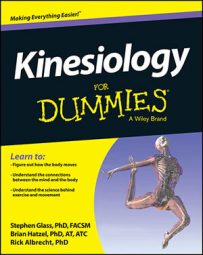Ergogenic refers to something that helps you generate more work. An ergogenic aid may be something that helps make the work easier to perform (like a shoehorn helps you put on your dress shoes) or provides a boost to your physiology so that you can do more work. Some ergogenic aids are legal and common in sports; others are banned.
| Aid | Possible Effect | Possible Side Effect | Legality |
|---|---|---|---|
| Caffeine | Increases use of fat as fuel Stimulates the central nervous system (CNS) |
Dehydration Elevated heart rate and blood pressure |
Legal up to 15 micrograms/ml (the equivalent of drinking 10 cups of coffee in 1 hour) |
| Anabolic steroids | Increases protein synthesis and muscle mass Accelerates recovery from heavy exercise |
Possible disorders of the heart, liver, and kidney Reduction in size and function of testes Increased risk of heart disease |
Controlled substance Prescribed for individuals with low testosterone, HIV, and sexual dysfunction Detected levels above normal are illegal in sports that test for it |
| Carbohydrates | Increase exercise performance Accelerate recovery from heavy exercise Essential for fat burning and most high-intensity activities |
Can add non-nutritious calories to the diet and promote fat storage, if the carbs eaten are simple sugars | Legal Strive to get 40–60% of your calories from complex carbs that have fiber and nutrients. |
| Erythropoietin | Stimulates the production of red blood cells Increases oxygen transport capacity of the blood, thereby improving performance in aerobic activities |
Thickens the blood, increasing blood clot risk May damage kidneys and blood vessels Is a danger to pregnant women and fetuses |
Is prescribed by doctors for patients with anemia (low red
blood cell count) Can be naturally increased through exposure to altitude, but supplementation is Illegal in sports |
| Creatine | May increase muscle stores of creatine phosphate, a high-energy
source of ATP in the muscle May result in improved performance for short duration, high-intensity activities |
According to most studies, safe in doses of
5–20g/day May be dangerous to those with kidney disease Other side effects possible, so caution is advised |
Legal |
| Aid | Possible Effect | Legality |
|---|---|---|
| Wicking clothing | Transfers moisture from the skin through clothing, to be
evaporated Aids in cooling the skin for temperature regulation during exercise |
Legal and sold at most sporting goods stores |
| Compression garments | May prevent post-exercise tissue swelling (edema) and aid in
recovery from exercise Limited information on performance enhancement potential |
Legal |
| Clap skates (a type of speed skate designed to keep more surface area of the skate on the ice) | Provides added acceleration and speed during the push-off phase | Legal and widely used in speed skating |
| Aerodynamic cycle and helmet | Reduces drag and allows for greater race speed | Legal |
| Drag-resistant swimsuits (specially designed compression suits) | Increases buoyancy and reduces drag, greatly improving speed in the water | Regulated by the International Swimming Federation for international competition |
| Specially designed running shoes (many varieties are available, depending on the activity) | Improves running speed due to improved traction and better foot
support Reduces injury |
Legal |

